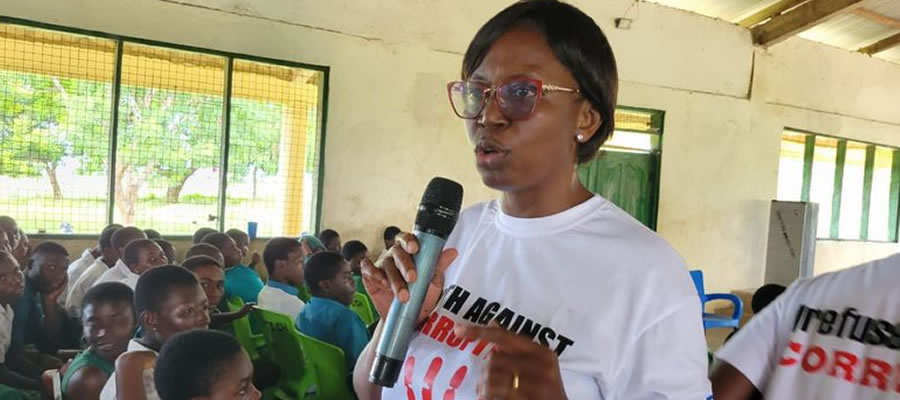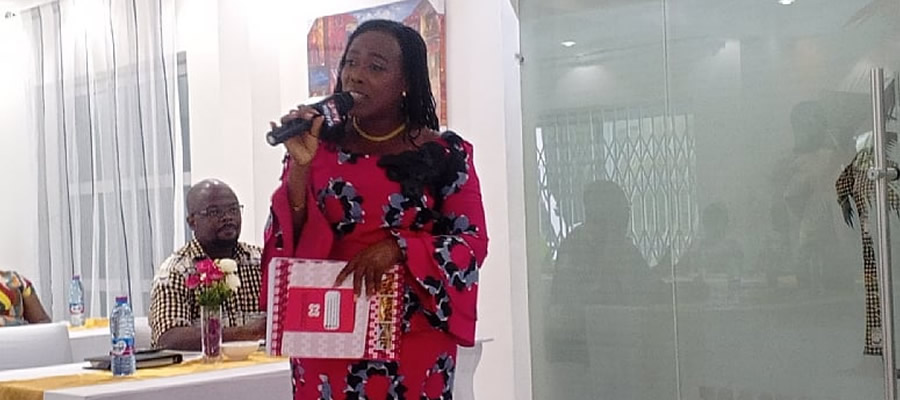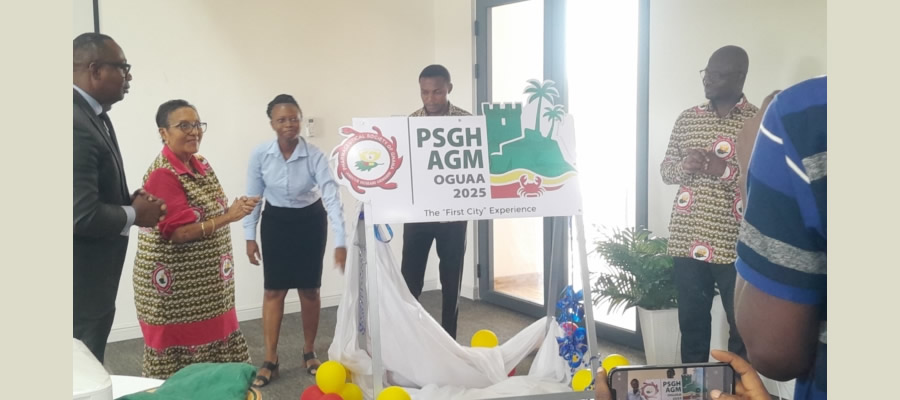

Agriculture
Agriculture employs 6.8% of the economically population being undertaken in the northern part of the metropolis and fishing along the coast. The land tenure systems currently in operation are the Owner Occupancy and Shared Tenancy (where the land owner leases the land to the farmer and the proceeds shared between them). Crop production is largely rain fed and traditional techniques and subsistence production still dominate.
About 95% of farmers use cutlasses, hoes, axes and mattocks. Spraying machines and pruners are also used but on a smaller scale. Bush fallowing, slash and burn are still widespread. Existing storage facilities are mostly traditional – barns, roof storage, and narrow cribs. Processing as a means of conserving bumper output is very limited. Urban-based middlemen within and outside the Metropolis undertake marketing of the bulk of farm produce. Most of the farmers sell their produce at the nearest local markets to these middlemen who cart them to the large urban market centres for re-sale where known market Queens also monopolize the retail trade. Livestock production is also predominant in the Metropolis. Animals mostly reared are sheep, goats, cattle, pigs, and poultry. Poultry production is fast growing with over 45,000 birds produced annually.
Different types of soil series are found in the Metropolis. Classifications vary from the coast to the hinterland. Types found include Chichiwere-Kakum (suitable for tree crops), AyensuChichiwere (suitable for both tree and non – tree crops) and Achenfu-Kuntu-Asokwa-Suprudo (mainly for non – tree crops).
Table 10: Major Tree Crops
Source: SRID Accra 2010
Table 11: Major Staple Crops:
Table 12: Livestock Production:
Table 13: Fish Catch Estimates:
A total of 131 Farmer groups have been formed in the Metropolis. Out of this number, only five have been registered so far. Efforts are being made to get the other groups registered by the Department of Co-operatives. The groups identified are into crop and livestock production, fish, cassava and palm kernel oil processing.
Sources of Agricultural Credit are various, both from formal and informal sources. Formal Sources include Ghana Commercial Bank, Agricultural Development Bank, Kakum Rural Bank, National Investment Bank, Twifo Rural Bank and Credit Unions. Informal Source include Susu/Money Lenders, Self and or family source.
The major market in the Metropolis is the Kotokoraba/Kotoka Market located in the central business district (CBD) of Cape Coast. Other smaller markets could be found at Anaafo, Abura, and Efutu communities.
a. Agricultural Machinery / Implements/Tools Fabricating Company:
• Gratis Foundation
• Number of Artisans: 15
Table 14: Number of Agricultural Implements/ Machinery/ Structures:
* It must be noted that, farm implements are mostly hoes and cutlasses.
b. Agricultural Input Distribution / Labour Conditions
Private sector controls sale and distribution of agricultural inputs. Prices of inputs such as cutlasses, fertilizers, pesticides, knapsack sprayers, planting materials, feed, drugs, other veterinary chemicals, fishing gears, simple tools and equipment are very high. Supply of labour is scarce at peak of farming season. The cost of labour is quite high; currently ranging between ¢30,000 - ¢35,000/acre weeding.
The land in the Metropolis is suitable for the production of citrus, oil palm, cassava, maize, vegetables (pepper, okra, egg-plant, cabbage, watermelon etc.) and plantain on large scale. The Metropolis has available a river and streams suitable for Irrigation Scheme development and Aquaculture. Rice can also be cultivated in the valley bottoms and catchment areas of the streams. Marine fishing is another major activity along the coast mainly with the use of canoes and few motorized vessels. None of fish-landing sites is developed in the Metropolis. Development of fish landing sites or bays with fish markets are necessary in the Metropolis to boost fishing and increased employment.
Establishment of multipurpose agro-processing facilities for citrus and pineapple is feasible. Cottage industries to process citrus, vegetables and, or, fish will be viable in the Metropolis. Raw materials to feed these industries could be easily produced with little effort and assistance to farmers and fishermen. There are busy markets at core Cape Coast Township, Abura, Kotokuraba and Anaafo.
Table 15:Other areas of employment in the Metropolis
In order to meet the food demands of the metropolis based on the most common agro-produce, the city requires about 35,000 acres (141.65 sq km) of arable lands and 15,000 (60 sq. km) acres for grazing (animal husbandry). Based on the vegetation cover of the metropolis, it can be concluded that there are inadequate lands to produce the food needs for the city.
There are a number of agriculture policies being implemented to improve on productivity of farmers. These are
1. Planting for Food and Jobs;
2. Planting for Export and Rural Development;
3. One District One Factory; and
4. Agro-Mechanization for Food and Jobs
Business Development
a. Major Markets Centers
There are market centers in almost all the communities. However, the major market centers are located in Kotokuraba, Abura and Anaafo. These market centers attract traders from communities within and outside the Metropolis. The markets are centres of vibrant trading activities in food produce (including vegetables and fruits), fresh and processed fish (including smoked and salted fish), household wares, electrical gadgets and construction materials. These markets serve as significant sources of revenue to the Assembly through market tolls paid by traders and conveyance by the vehicle.
b. Fishing
Fishing is a main economic activity of the coastal communities. It employs about 2,000 fishermen and 500 women who are mostly engaged in fish processing and mongering. Fishermen in these communities use canoes, motor fishing vessels and canoes with either outboard motors or paddles.
Job Creation
Service is the main source of job creation as the city is noted for education and tourism due to its geographical location. There are pockets of daily trading centres in almost all the communities serving the people notably at Kotokuraba
Other avenue for jobs creation in the city are hospitality, restaurants (local and continental), fuel (petrol, diesel, gas and kerosine) retailing, garages (automobile and motorbike mechanics), artisans (hairdressing, dressmaking, carpentry, masonry etc …) and hawking
Land Tenure System
Generally, the indigenous people own the land through family or kingship ties. The administration of these lands is by way of custody. Distribution and use of the land is in the hands of family heads. Cultivation of these lands by non-indigenous people is characterized by the ’abunu’ and ’abusu’ systems of acquisition. Other forms of acquisition of land also exist, though on a limited scale such as leasehold, hiring and outright purchase.
Farm Sizes and Crop Production
Agricultural production is mainly at the subsistence level. The fairly high rate of growth of the population has worsened the situation of land availability; average farm sizes are therefore below 1.5 hectares. It is not surprising that large-scale farming projects are non-existent . Cash crop production is limited to the northern parts where some citrus, cocoa and oil palm are cultivated but on a generally limited scale.
The major food crops cultivated are maize, cassava and cocoyam. Since 1994 yam cultivation has been expanding but the crop is still a minor one compared to production levels in the Northern and Volta regions of the country. Yields per hectare of the various crops are generally lower than expected except for plantain and citrus fruits. The yield of 870 metric tonnes not only exceeded the 2000 yield of 839 tonnes but also exceeded the Ministry’s target of 850 metric tonnes (see Table 9).
Apart from the crops listed above, the Metropolitan Area also produces coconut, which thrives well on the sandy beaches. The crop has over the last four to five years suffered a great setback due to the incidence of the Cape Saint Paul Wilt disease, which has destroyed hundreds of hectares of coconut plantations.
The Ministry of Agriculture is collaborating with researchers to find a solution to the problem, but until then, affected farmers are advised and encouraged to go into the production of other crops. One thing that would also be of help to the farmers is for the Coconut Research and Rehabilitation Project, based in Sekondi, to adopt Cape Coast for assistance as is being done to the KEEA and AAJK. Districts.
Poultry and Livestock.
This sector has made modest gains in the last two to three years, recording an annual growth of 3% within the period. Poultry, turkey, rabbits, pigs, sheep, grass-cutter and goats have all shown some improvement, particularly in 2002 (Table 10).
Table 9. Cape Coast Metropolitan Assembly -Poultry and livestock production.
The role of the Veterinary unit in stabilizing production in the poultry and livestock sector has been quite tremendous. The high incidence of rabies recorded up to 1999, averaging 20 per year, has been substantially reduced. For instance, there were only 5 cases in 2001 and 11 in 2002. The Assembly was proactive in terms of support to the Veterinary unit and must be commended. The Assembly has promised to support the Unit to achieve 90% coverage in the vaccination of pets as well as offer extension services to poultry and livestock farmers.
Other projects
Apart from the mainstream agriculture there are other projects designed to enhance crop production by introducing new technology to farmers. One is the Ministry’s attempt to encourage the production of non-traditional crops, which is a policy to diversify agriculture in the country generally. In the Municipal District, farmers are encouraged to go into the production of grass-cutters, mushroom, citronella, cashew and Jathropha (physical oil plant). Bee-keeping and snail cultivation are also being encouraged.
Another area of importance is the Root and Tuber Improvement Project, which aims to assist farmers to cultivate improved varieties of cassava and sweet potatoes. Since its inception in 2000, some 698 farmers, comprising 453 males and 245 females have responded favourably to the call and cultivated 61.62 hectares of cassava. Another 150 others cropped 11.34 hectares of sweet potatoes. A MAFA/ADRA Collaboration has also assisted 475 farmers to grow tree and food crops in 14 communities in the District. The crops include citrus, cashew, maize and woodlots. Seedlings and other inputs are supplied to the farmers by ADRA on credit basis, to be repaid after harvest. The Project is affecting the conditions of farmers positively and should be sustained.
The Sasakawa Global 2000 Project has also been in the Metropolitan Assembly for a while. It is one Project that has transformed the lives of many farmers in the country and the District. Its main focus is to assist the Ministry to train farmer based organizations (FBO) and women groups to build the capacity of their members in business management, Book Keeping and Customer Relations. Vegetable farmers at Krudu and Kakumdo benefited from the programme in 2002. The programme will be extended to other groups this year as well as in 2004. Finally, there is the Land and Water Management Project, which is assisted by the Government of Denmark through DANIDA.
The focus of the Project is to offer training to Agricultural Extension Officers who in turn assist farmers to sustain production through sound water and land management. Since its inception in 2000 over 7million cedis has so far been spent on the Model Village Land Development Programme at Kyirakomfo near Brimso where the Kakum River flows. It is expected that other village communities would also benefit from the programme in the next few years before the project elapses.
The Government of Ghana in conjunction with the World Bank initiated a Medium Term Agricultural Development Programme (MTADP) through which the economy would achieve a growth rate of 5% per annum by the year 2005. Agricultural policy is committed to adopting modern technology to make the set target achievable. Government’s declared policy is, thus, aimed at eliminating or minimizing malnutrition, producing enough food and supplying raw materials for the agro-based industries.The MTADP has also brought into focus the idea of diversification in agricultural production, where the non-traditional export crops play a major role.
Cultivated Land Area:
Except for few forest reserves areas, almost all the land has once been cultivated. About two thirds (2/3) of the land surface is currently under cultivation.
Farming Population:
About 70% of the people are farmers with an average farm size of 0.5 hectares. Currently, there are about 70 farming villages in the metropolis.
Agricultural Operations:
Mostly un-mechanized small to medium-scale farming, that uses single traditional tools (hoe and cutlass) is being practised. Commercial and backyard poultry, sheep and goat rearing, backyard piggery, and fish farming occupy the farmers.
Fish:
Fishing activities in the Municipality is on fish-catch from the sea, lagoons, ponds, rivers and streams. The sea is however the major source of fish, accounting for about 90% of the total catch. The fishermen have been requesting for proper landing space and large fishing vessels to increase fish production. There is room for investors to establish cold storage facilities which the fishermen wish to see built nearer to improve the fishing industry. Investors could also consider setting up processing industries, boat construction, development of aqua-culture, and the development of stock ponds for fingerlings.
Fisheries Sub-Sector Capacity Building Project:
Under the above project, the local fishermen and fish mongers at various landing beaches, including Ekon and Abrofo-Mpoano, are mobilized to form Community-Based Fisheries Management Committee (CBFMC). A Consultant has been engaged to oversee the smooth running of the project.
Crops:
Crops production in the Metropolis is very low. Maize, cassava, plantain, cocoyam, yam, oil palm, coconut and vegetables such as tomatoes, pepper, garden eggs, cabbages are all planted under rain-fed conditions. They are cultivated on small-scale. Mixed cropping is undertaken on land prepared traditionally, by using simple tools like hoes and cutlasses. The Assembly has plans of developing feeder roads to reach food producing centres and facilitating farmers’ access to credit through the formation of co-operatives, groups or associations that would also enable them to have access to technology transfer and a ready market.
Ministry of Food and Agriculture (MOFA) / NGO Collaboration:
The Ministry of Food and Agriculture (MOFA) has been in close collaboration with Adventist Relief Agency (ADRA). Whilst ADRA supports its programmes with funds and logistics, the MOFA backs it with technical advice.
Youth in Agriculture:
Ten youth groups were formed and assisted with 2.0 million cedis per group. An amount of 20.0 million cedis was disbursed on the Youth in Agricultural Project in the Metropolis. A fraction of the CCMA’s Common Fund is also being used to assist the needy farming communities to expand their farms and purchase processing machines like cassava grater and presser.
Date Created : 6/2/2025 5:24:50 AM













 facebook
facebook
 twitter
twitter
 Youtube
Youtube
 +233 593 831 280
+233 593 831 280 0800 430 430
0800 430 430 GPS: GE-231-4383
GPS: GE-231-4383 info@ghanadistricts.com
info@ghanadistricts.com Box GP1044, Accra, Ghana
Box GP1044, Accra, Ghana